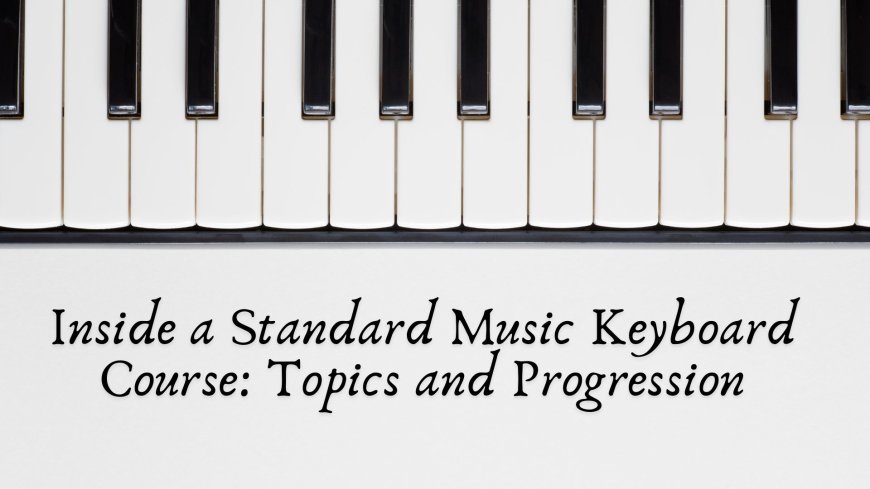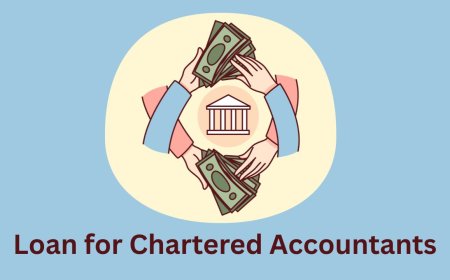Inside a Standard Music Keyboard Course: Topics and Progression
A standard music keyboard course offers a structured, supportive path from a beginner with no experience to a confident player with a growing repertoire and skill set

Learning to play the keyboard is a fulfilling journey that combines technical mastery, musical creativity, and cognitive development. Whether you're a hobbyist or an aspiring professional, a structured music keyboard course can lay the foundation for your musical growth. This article explores what you can expect from a standard music keyboard course, breaking down the typical topics covered and the progression followed from beginner to intermediate (and sometimes advanced) levels.
Introduction to the Music Keyboard
The course usually begins with a basic introduction to the instrument itself:
-
Understanding the Keyboard Layout: Students learn the names of the white and black keys, how octaves are structured, and the concept of middle C.
-
Posture and Hand Position: Proper sitting posture, finger numbering, and hand placement techniques help prevent injury and build good habits.
-
Basic Terminology: Terms like tempo, pitch, dynamics, and timbre are introduced early on to build a common musical language.
Music Theory Foundations
Even a practical course typically includes theoretical elements to help students understand what theyre playing:
-
The Musical Alphabet and Intervals: Students learn about whole steps, half steps, and the distance between notes.
-
Scales and Key Signatures: Major and minor scales, as well as the Circle of Fifths, are introduced gradually.
-
Chords and Harmony: Basic triads (major, minor, diminished, augmented) are taught, along with chord progressions like I-IV-V-I.
-
Reading Sheet Music: Learning the grand staff (treble and bass clef), note durations, and rhythmic notation is a key component.
Finger Exercises and Technique Development
Technique is essential for expressive playing and physical ease at the keyboard:
-
Five-Finger Patterns: Students practice playing simple scale patterns in one hand, then both.
-
Hanon Exercises: Many courses introduce Hanon exercises to improve finger strength and independence.
-
Articulation and Dynamics: Techniques such as legato, staccato, crescendo, and diminuendo are introduced early to build expressiveness.
Rhythm and Timing Skills
Rhythm training is integrated from the beginning and evolves in complexity:
-
Basic Counting and Clapping: Whole, half, quarter, and eighth notes/rests are taught.
-
Metronome Practice: Using a metronome helps develop consistent timing.
-
Syncopation and Complex Rhythms: In later stages, students encounter dotted rhythms, ties, and complex time signatures.
Song Repertoire and Style Exploration
A fun and motivating part of the course is playing songs across genres:
-
Childrens Songs and Folk Tunes: Ideal for beginners to build confidence and fluency.
-
Classical Pieces: Students progress to simple works by composers like Bach, Beethoven, or Mozart.
-
Pop and Rock Songs: Contemporary music makes lessons relatable and encourages improvisation.
-
Jazz and Blues (Optional): Depending on the course, more advanced students may explore genres requiring improvisation and swing rhythms.
Chord-Based Playing and Accompaniment
Most modern keyboard courses integrate chord-based playing with melody:
-
Lead Sheets: Students learn to play from lead sheets, using chords and right-hand melody.
-
Accompaniment Patterns: Basic left-hand styles such as arpeggios, broken chords, and Alberti bass are taught.
-
Auto-Accompaniment Features (for Digital Keyboards): Students may learn how to use rhythm accompaniments and play along with backing tracks.
Improvisation and Composition Basics
As students gain confidence, they are encouraged to explore their creativity:
-
Improvising with Scales: Simple improvisation using the pentatonic or blues scale.
-
Creating Simple Melodies: Exercises in melodic phrasing and motif development.
-
Composing with Chords: Students may compose their own short pieces using known chord progressions.
Ear Training and Aural Skills
Listening is as important as playing. Many courses include ear training to sharpen musical perception:
-
Interval Recognition: Identifying the distance between two notes by ear.
-
Chord Quality Recognition: Distinguishing between major, minor, and other chord types.
-
Melodic Dictation: Writing down short melodies after hearing them.
Performance and Assessment
Towards the end of a course level, performance is emphasized:
-
Solo Performances: Playing a prepared piece from memory or notation.
-
Duets and Ensemble Work: Encouraging collaboration and rhythm synchronization.
-
Evaluation and Feedback: Constructive critique from instructors helps identify strengths and areas for improvement.
Progression Through Levels
A standard music keyboard course is usually divided into levels:
-
Beginner Level: Focus on fundamentalsnote reading, posture, simple tunes, basic rhythm.
-
Early Intermediate Level: Introduction to more complex rhythms, multiple key signatures, hands together.
-
Intermediate Level: Two-part playing, wider repertoire, expression techniques, chord inversions.
-
Advanced Level (Optional): Requires significant commitment and focuses on advanced techniques, concert pieces, improvisation, and music theory.
Many courses follow a certification structure like ABRSM, Trinity College London, or Rockschool, offering graded exams to track progress and build credentials.
Conclusion: A Journey Worth Taking
A standard music keyboard course offers a structured, supportive path from a beginner with no experience to a confident player with a growing repertoire and skill set. Each topicwhether technical, theoretical, or creativebuilds on the last, ensuring steady progression. The blend of discipline and artistry not only teaches you to play music but to understand and feel it. Whether youre pursuing music professionally or simply for joy, a keyboard course is an enriching way to unlock your musical potential.



































